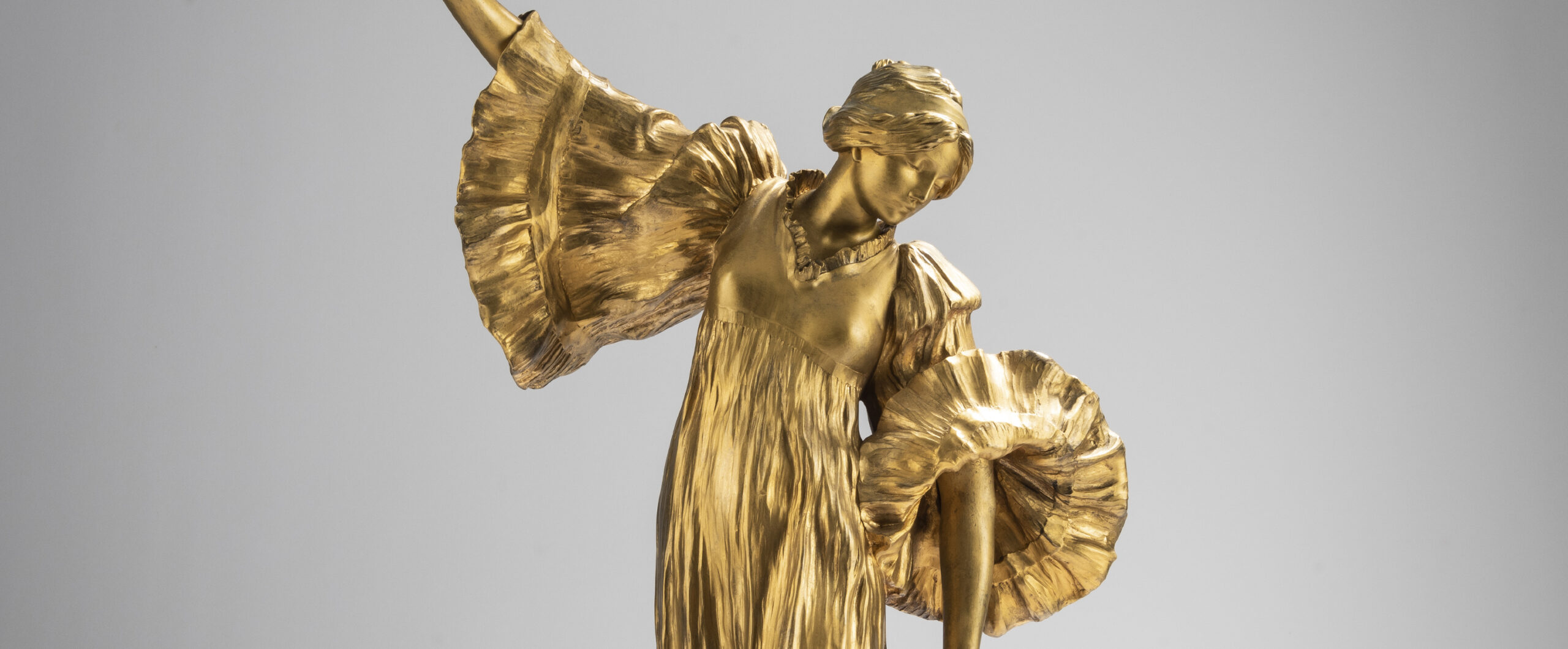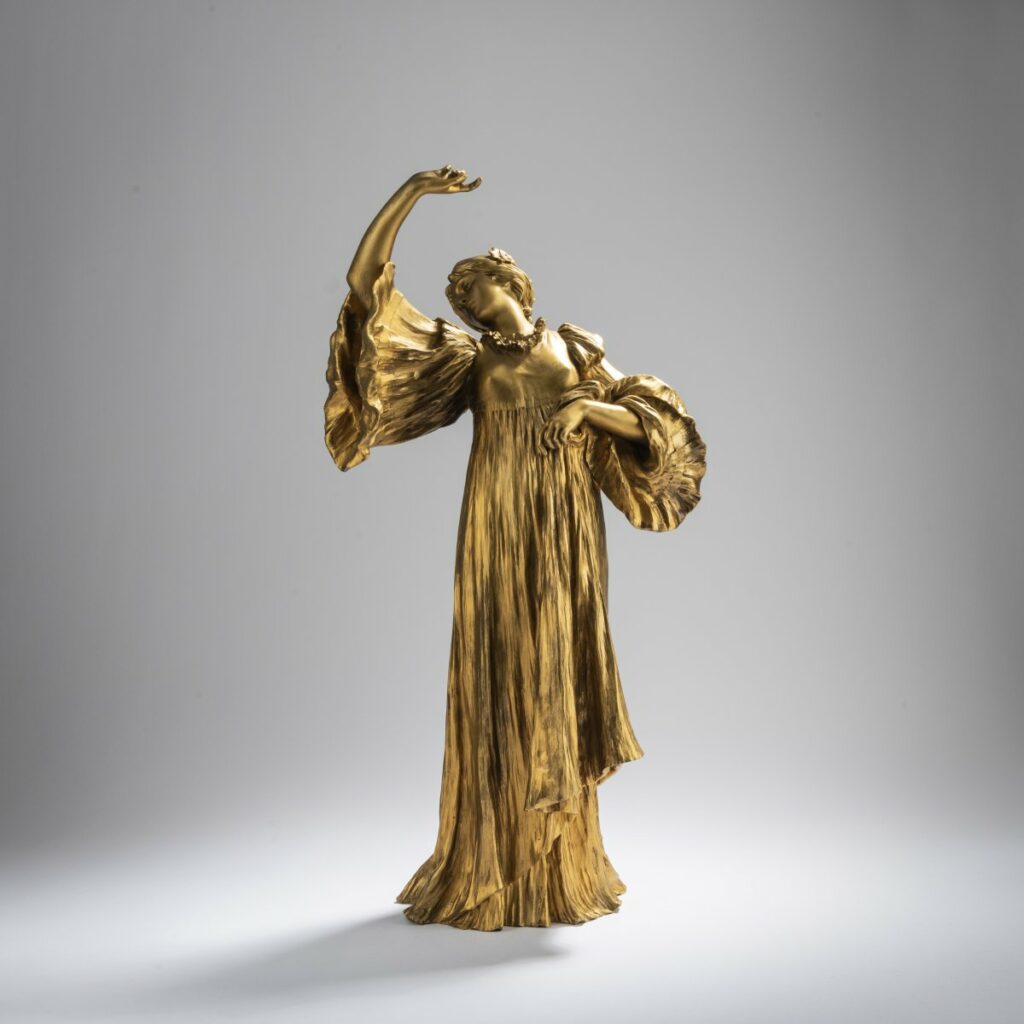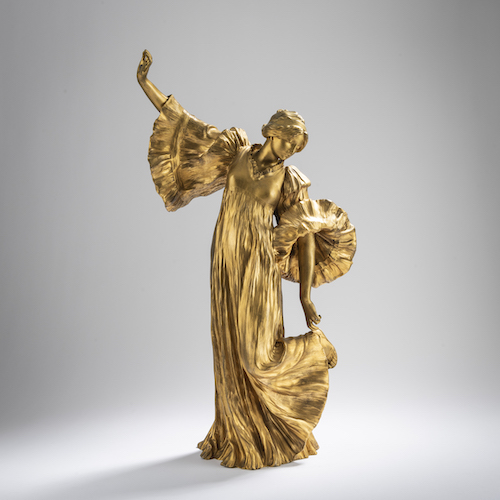
The young Léonard Agathon van Weydeveldt, born in Lille, Belgium, in 1841, received his training at the Académie des Beaux-Arts in Lille and at the Ecole des Beaux-Arts in Paris
He is also known to have been an apprentice to Jean-Baptiste Carpeaux and to have participated in the construction of the ‘Fontaine de l’Observatoire’ (also: ‘Fontaine de Quatre Parties du Monde’), in Paris (1867- 1874). As he had fought on the French side in the Franco-Prussian War of 1870/71, the Belgian, who had lived in Paris since 1867, received French citizenship in 1887. From 1879 to 1914 he regularly took part in exhibitions and received various awards, for example at the World’s Fair in Paris in 1889 and in Brussels in 1910. In 1894 he began working with the Sèvres porcelain manufactory. In 1897 he created the first models for the ‘Jeu de l’Echarpe’ centrepiece, and in 1900 the bisquit porcelain version was presented on the porcelain manufactory’s stand at the World’s Fair in Paris. Léonard received the gold medal for it. In 1901, the bronze foundry Susse Frères took part in the exhibition of the Société nationale des Beaux-Arts with the bronze version of the Jeu de l’Echarpe. The last three figures of the 15-piece centrepiece were added in 1902 at the latest. Despite numerous other designs of the highest quality, the centrepiece was to become Léonard’s most famous work. Léonard died in Paris in 1923.
Agathon Léonard first conceived his ‘Jeu de l’Echarpe’ as a series of wall reliefs to adorn the foyer of a theatre. The then director of the Sèvres porcelain manufactory, Alexandre Sandier, saw the models for the wall decoration, initially planned with ten dancers, at the exhibition of the Société nationale des Beaux-Arts in Paris in 1897 and was so enthusiastic that he immediately commissioned the artist to realise his design as a multi-part centrepiece. In 1899, the centrepiece consisting of dancers, musicians and torchbearers was presented with twelve figures and extended by three more by 1901. The female figures, designed with great attention to detail, still make the viewer feel the dawn of a new attitude to life, which is expressed in the flowing, non-constricting dresses of the young ladies, their free movements and the restrained ornamentation. Several famous dancers were considered as models for the figures, including Cléo de Mérode (1875-1966) and Sarah Bernhardt (1844-1923) as well as the much portrayed Loïe Fuller (1862-1928).
The Susse Frères foundry secured the rights to produce the bronze centrepiece as early as 1901. In 1901, the group was presented at the Salon of the Société. It was executed in three different sizes, some of them also in chryselephantine or silver-plated. Susse is said to have executed 100-130 examples of the figures by 1935.


